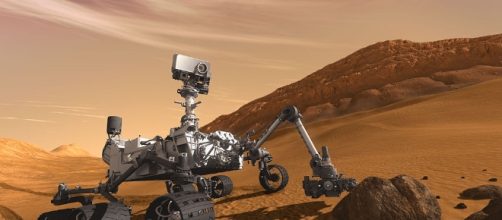The Curiosity Rover has been exploring the surface of Mars for the past five years. NASA’s car-like robot has successfully delivered significant Martian data in the course of its mission. As it celebrates its 5th birthday, the rover has captured another spectacular Martian view.
Curiosity Rover’s journey to Mars
NASA’s car-like rover landed on the surface of Mars last August 5, 2012. The successful deployment of the Curiosity Rover was a significant milestone for NASA’s Jet Propulsion Laboratory (JPL). Ever since its deployment five years ago, curiosity has learned so much about Mars.
The rover’s original mission was to locate and collect samples from Mar’s Gale crater. The goal was to learn if the vast basin was capable of sustaining and hosting the simplest form of life. In the process, curiosity was able to locate traces of ancient water and several other compounds that are required to sustain life.
According to Gears of Biz, NASA originally planned to allow the rover to explore Mars for two Earth years. However, Curiosity Rover performed beyond expectations. The expedition has provided the organization with a significant volume of novel and compelling data. Hence, by the end of its original tenure, the agency decided to extend the mission until October 2018.
Presently, the rover is pursuing the trail towards the peak of Mount Sharp located at the heart of a crater whose width measures about 154 kilometers.
Curiosity is also scheduled to examine three rock layers which are dominated by clay, iron hematite and sulfate salts, respectively. The expedition will help scientists piece out the puzzle that will hopefully reveal how these layers fit into Mars’ history.
The rover is equipped with a high powered lens that can take microscopic images in high quality. Unfortunately, NASA said that the lens, despite its current capacity, cannot be used to captures fossils or preserved forms of cells. Curiosity can only detect and analyze cells via its built-in portable chemistry lab. Despite the limitation, the rover successfully tested small organic molecules called chlorobenzene. The samples contained a traces of carbon ring.
The molecule which was found in an old mud rock is key in the creation of cell walls and other similar structures of life.
A Happy Birthday Song to celebrate its historic Mars landing
Before it was deployed to Mars, NASA engineers have programmed Curiosity Rover to celebrate its annual anniversary. The robot is capable of singing to itself. Every August 5th, the robot sings itself a Happy Birthday Song.
New Atlas reports on the rover’s latest accomplishment. After celebrating its 5th anniversary, the rover sent back some of the clearest photos of Martian clouds.


